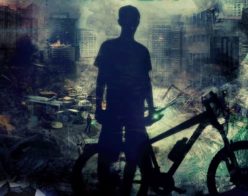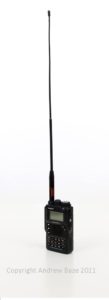Day 3 – Disaster Medical
Things are picking up! We covered the first half of our Disaster Medical material. All told, we covered triaging in a disaster scenario as well as some basic first aid.
Triage is interesting. What happens in triage? You essentially decide who lives and who dies. Wow. Thank goodness we get training on this, and don’t have to completely figure it out on our own if a disaster happens! Yeah, it would still really suck, but it will suck a little less after having gone through this.
The quick version, at least in our county, is that you’ll have to tag people (with colored, non-sticky tape like surveyor’s tape, which you tie on somewhere ) green if they’re walking wounded, yellow if you can wait to treat them further (not life-threatening injuries), red if they have life-threatening injuries they could recover from with immediate treatment, or black and white (stripes) if they are 1) dead or 2) they’re going to be dead soon and there’s nothing you can do about it.
Again, this is heavy stuff to consider. Why subject yourself to these morbid notions? Because if the time comes when you do need to triage, you will have at least a little training under your belt. It’s better to sweat in training than bleed in war, they say. You might as well think now about what tough decisions you might need to make (and this doesn’t only apply to triage), because they will only get harder to make later, in an emergency.
We got to do a hands-on exercise, and kudos to our actors. Some were appropriately noisy (which I expected, but still added to the stress of making the right call) and some were surprisingly quiet (which I guess wouldn’t be a big surprised if they were shell-shocked, now that I think about it). We had to evaluate them on the spot, make a call (green, yellow, red, black & white), and move forward. We directed the walking wounded back to the door we came in through. It was a good learning experience. And just reading or talking about it wouldn’t have been nearly as good of an exercise. Doing this was important, and I know there is more “doing” to do. I’m looking forward to it.
As far as the first aid material goes, you should know this stuff already: how to not contaminate yourself with potentially deadly goo by wearing gloves, mask, and eye protection (if you have them), how to stop bleeding with pressure, putting on a bandage, rolling someone into a recovery position, and more. If you don’t know it, either take a CERT class, or better yet (as far as first aid is concerned) take a first aid and CPR course through your local Red Cross or whoever else teaches it! There is no good reason not to do this. Even if you’re handicapped, they will accommodate you. Please do it.
Another thing I liked about this class: even after taking an EMT course and a variety of first aid courses over the years, I never had to take gloves off when they were actually covered with muck (the goal being to not get any on your skin as you remove the gloves). I won’t give away the teacher’s secret (hint: it’s used in a mocha), but our gloves were actually coated in muck, and we learned whether our technique for removing them worked. A good test, indeed!


